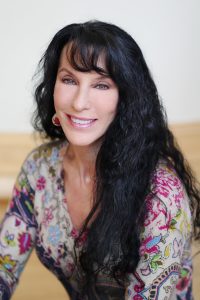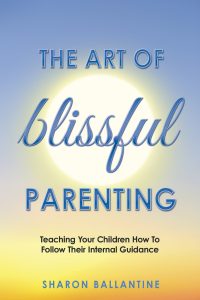GUEST BLOG POST: Allowing Your Child to Make Choices by Sharon Ballantine, author, the Art of Blissful Parenting

 A book excerpt from The Art of Blissful Parenting (Balboa Press):
A book excerpt from The Art of Blissful Parenting (Balboa Press):
We are all here to express our freedom, and children intrinsically know this. Each of us is here to live our highest joy and to have the freedom to create our own paths. But how do we, as parents, balance freedom with safety? How do we allow our children to make choices on their own so that they grow up knowing who they are as they reach for their highest selves—and at the same time discourage them from engaging in what we believe to be dangerous or risky behavior?
There will be times when your kids make choices that don’t appear to you to be their highest (best) choice. Such choices, although they may seem to be unwise or bad, are an important part of a child’s evolution. None of us can know exactly what we want until we experience life fully, and this includes experiencing what we don’t want. Children need this experience. Your children will inevitably do things that they’ll discover aren’t as much fun as they thought, or they may be faced with unpleasant consequences from an action they took. Part of any child’s learning includes sifting through the choices and desires in their lives to create what they want.
If we can teach our children to use their Internal Guidance Systems and encourage them to make choices without judging them, we will contribute to their growth. In order to do this, we must first remove the “good” and “bad” labels, which are judgments. Rather than pronouncing a certain behavior “good” or “bad,” we can pose this question to our children: “Does this decision (or action) serve you or not, meaning does it take you in a direction you want to go?”
What do I mean by an action or decision “serving you”? If you feel good about your decision, and you made your choice when you were in alignment, then it serves you in some way; if it does not feel good and the choice was made when you were not in alignment, then it doesn’t serve you.
For example: Your son wants to quit taking piano lessons, which previously brought him joy. He still loves music but has discovered that playing the guitar and writing his own songs is more creative and more fun. His new choice will serve his creativity and expansion because this new choice sprung from his alignment and joy regarding his new creative outlet.
But what about the choices that do not serve your child? For example: Your son chooses to periodically skip school. The natural consequence of his actions is that he has to repeat the classes in order to make up lost credits. He may be able to take the missed classes in summer school, but he may not be able to do so in time to graduate with his class. So how do you respond as his parent? Once he has made a choice that certainly appears to have not been a good one, it serves no one to suffer over it. What’s done is done, and it is time to move on. In other words, I am not a believer in adding to the natural consequences when a child makes a less-than-ideal choice.
I don’t believe that it serves a child to be punished further by losing all of his privileges. If a child is left with nothing, he will become so out of alignment that he won’t be able to create anything productive. Does this mean that you should never impose consequences when your child engages in negative behavior? Not necessarily. I imposed consequences when I felt disrespected by my child or felt that their act was clearly reckless. However, I did not punish when I encountered a situation where my son or daughter acted when they were in alignment and made a decision they felt good about, but which I didn’t happen to agree with. Each parent has to look at these situations individually and decide in the moment what they want to teach their child.
We can help our children move forward by encouraging them to become clear on what they want based on having experienced what they don’t want. Life is always about looking ahead, not back. Allowing your children to experience their own consequences isn’t easy, but it is liberating because it frees you from the need to fix things for them. On the other hand, attempting to save your children from life’s trials and tribulations only holds them back from discovering who they are and what they want from life. Our first impulse as parents is to protect and defend our kids, but with practice we can instead stand beside them and allow them to grow by letting them listen to their Internal Guidance Systems and make their own choices.
When we trust our IGS as well as our child’s, we no longer measure their success according to how well they comply with our demands. Rather, we take joy in their freedom.
Sharon Ballantine is a life coach, parenting coach, and founder of The Ballantine Parenting Institute, her online course for parents. Ballantine has also headlined her own parenting column for BeliefNet.com and hosted her own Internet TV Show, The Sharon Ballantine Show. Sharon Ballantine resides in Seattle, Wash. Her first book, “The Art of Blissful Parenting,” offers parents a more easeful way to raise their children: teaching their kids how to tap into their own guidance so they don’t spend their lives relying on the guidance of others.
Tags: blissful parenting, children, fatherhood, having a family, motherhood, sharon ballantine















